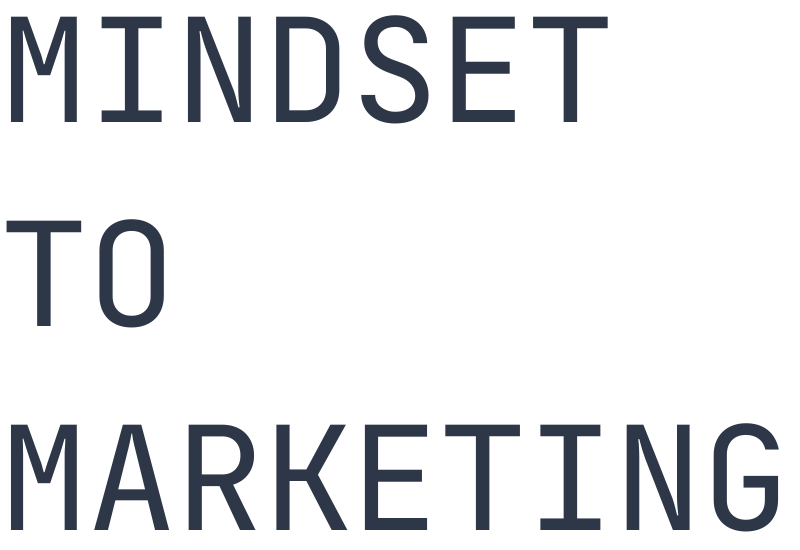The Ethics, Methods, and Missteps of Modern Market Research
The Fine Line Between Insight and Intrusion
Have you ever wondered how companies seem to know exactly what you want before you do? And we’ve all questioned whether our devices are listening as we see ads pop up in our social feeds. It’s no accident.
Market research today is more sophisticated—and more invasive—than ever. From scraping data off chat groups to AI-driven responses tailored by competitor analysis, modern methods often tiptoe across ethical lines.
But where should we draw that line? When does gathering insights for your business shift from innovative to intrusive? In this guide, we’ll explore how to ethically and effectively conduct market research while highlighting what practices to avoid to protect your reputation—and your customers’ trust.
Case Study: How An Early (Unethical) Experience In Market Research Now Informs My Ethical Approach
We swap sceptical glances as our Sales Manager struggles with the windswept market research forms. He wrestles them into our cynical hands as they attempt to fly for freedom and escape the dismal car park.
We all know the feeling. But there is no escape.
Feeling the weight of redundancy consultation, we are compliant without complaint.
“Good luck lads! The gaffer wants at least ten completed forms from each of you” he says, “Try not to get caught, I’ll be around on my mobile if you need me.”
I scan the content of the forms.
There are about twenty questions ranging from the basics right down to how many sugars they like in their tea. Clearly, this was written by someone who has never tried to engage a busy builder whilst he’s out shopping for bricks.
It felt wrong and that is always a good indicator that an ethical boundary has been crossed.
Our assignment: to hang out in the car park of our main competitors’ sites, survey their customers and try to get them to open an account with us. In the rain.
I dive back into my car, tossing my soggy folder onto the passenger seat and switch the radio on. The Arctic Monkeys are singing about a ‘scummy’ man who drives a Ford Mondeo. I am driving a Ford Mondeo.
Almost immediately, the calls begin.

My fellow sales reps have plenty to say about the day ahead. We are all taking different approaches.
One has already completed three forms with made-up answers. I riff on the idea of going ‘all in’ and just asking the store manager for permission to hang out in his car park.
The others, it would appear from the text exchanges, are planning on meeting for a pint at the snooker hall. I decline the offer to join them.
“I’m doing a City and Guilds in construction and I need to do some market research. Do you mind if I hang around in your car park and ask some questions?” I ask the store manager. My heart is pounding as I feel a roomful of strange eyes laser targeting me like an armed police raid. I pray no one knows who I work for because I feel like it is tattooed on my forehead.
“Yes, no problem. Just, would you mind wearing this hi-vis jacket, oh, and share your results with me at the end?” says the manager.
“Sure, thanks,” I say as I flee to the car park like a dog who just nicked a sausage off a dinner plate. It feels pretty awful.
A couple of hours later, the task is complete. It turns out two sugars in a builder’s tea is pretty much the average. I make a run for it rather than return to see the manager and risk being found out.
This was my first introduction to market research.
“For the things we have to learn before we can do them, we learn by doing them.”
―
You are probably thinking, how awful or unethical that sounded. And you would be right, it was on several levels.
There was, however, some logic to the task of finding new customers and understanding the market sentiment.
Consider that fifty per cent of my job role was to physically cold call on offices and building sites, doing pretty much the same thing but without the forms. This was the equivalent of shooting fish in a barrel.
But, it still felt wrong and that is always a good indicator that an ethical boundary has been crossed.
We all remember key moments that inform or define our moral and ethical framework. This early foray into market research stuck with me and is certainly not the worst scenario I have had to face in my working life.
These forks in the road, regardless of the direction we took provide opportunities for reflection. We ask ourselves if we did the right thing and make mental adjustments in case we face similar challenges to our moral compass in the future.
In my case, despite cringing at it, I can forgive my younger self for wanting to preserve employment. This situation, and others like it, all strengthened my resolve to embody ethical values as I progressed through my career.
Now we all face a host of ethical dilemmas within digital marketing and the use of aritificial intelligence. With our privacy and personal data at stake, we could easily question whether there is much of a difference between my experience as a young sales rep and modern digital marketing tactics.

What Is Market Research and Why Is It Essential?
Market research is essentially gathering data about your ideal client or target audience to understand their needs, preferences, and behaviours. To put it another way—it’s finding out what they need, what they like, and what makes them tick.
It’s also important to establish the size of the market you are intending to trade within. That means knowing how many people might want your product, whether they have the spare cash to buy it from you and whether this group is expanding or contracting. The insights you gain should ensure that you are selling the right thing to the right group of people at the right time. In short, solid market research means better business decisions.
Here are some specific ways market research helps your business:
- Product Development – Understanding customer needs helps you create products or services that people actually want to buy.
- Pricing Strategy – Knowing what your target market is willing to pay helps you set competitive prices.
- Marketing Campaigns – Market research helps you tailor your marketing messages that resonate with your target audience.
However, while traditional methods still have their place, modern market research uses big data, Artificial Intelligence (AI), and social media in ways that bring both opportunities and ethical challenges. Let’s explore some of the options and see what works and what doesn’t.
Like what you’re reading? Interested in how to take your digital marketing plan to the next level? Read about my practical tips to overcome self-branding marketing anxiety here.
Traditional Market Research Methods – Ethical and Personal
Focus Groups and In-Depth Interviews
For decades, focus groups and interviews have been the cornerstone of gathering honest and reliable insights. They allow brands to connect with real people in and capture their emotions, motivations, and pain points.
These methods are all about having real conversations with people.
Focus groups are like small group discussions where you bring together a handful of people from your target audience (typically 6-10 people) and ask them questions about your product, service, or brand. A trained moderator guides the conversation, ensuring everyone has a chance to speak and that the discussion stays on track.
In-depth interviews are one-on-one conversations that allow you to dive deeper into individual experiences and opinions. These are particularly useful for exploring sensitive topics or getting detailed feedback from key customers.
How To Do It Effectively:
- Recruit the right participants – Make sure the people you include in your focus groups or interviews are representative of your target audience.
- Develop a discussion guide or interview script – This will help you stay focused and ensure you cover all the key topics.
- Ask open-ended questions – Questions that can’t be answered with just “yes” or “no.” For example, instead of “Do you like our product?” ask “What do you like or dislike about our product?” or “What are your thoughts on the price of this service?”
- Create a comfortable environment – People are more likely to share honest opinions if they feel relaxed and safe. Offer refreshments and choose a quiet, comfortable location. For online interviews, ensure a stable internet connection and a comfortable setting for both you and the participant.
- Avoid leading questions – Don’t phrase questions in a way that suggests a particular answer. For example, instead of “Don’t you think our product is great?” ask “What are your overall impressions of our product?”
- Take detailed notes or record the sessions (with permission) –This will allow you to analyse the data later.
Ethical Strengths
These methods prioritize informed consent and participant engagement. Everyone involved knows their data is being used for research, where it will be stored and how it will be used. It is also possible to offer confidentiality and anonymity.
Drawbacks
The quality of information can depend greatly on the format and how the questions are posed. In-person focus groups can be costly and time-consuming with participants having to travel to a research centre. This can also create geographical limitations. It also makes it harder to recruit people as they are likely too busy to take time out unless compensated for their time.
Reference Point
According to the study, “A critical comparison of offline focus groups, online focus groups and e-Delphi.” Brüggen, Elisabeth; Willems, Pieter (2009), focus groups remain one of the most trusted market research methods for understanding customer sentiment due to the depth, breadth and quality of information.

Surveys and Questionnaires
Surveys are a great way to collect information from a large number of people quickly and efficiently. They can be done online (using tools like SurveyMonkey, Typeform, or Google Forms), by phone, or even in person.
Whether distributed via mail, phone, or in person, surveys have long been favoured for collecting quantitative data at scale.
How To Do It Effectively
- Define your objectives – What exactly do you want to learn from your survey?
- Keep it short and sweet – People are more likely to complete a shorter survey. Aim for no more than 10-15 minutes.
- Use clear and concise language – Avoid jargon or technical terms. Use language that your target audience will understand.
- Use a mix of question types – Include multiple-choice questions, rating scales (e.g., on a scale of 1 to 5), and open-ended questions to get a variety of data.
- Test your survey before launching it – Send it to a small group of people first to identify any confusing questions or technical issues.
- Determine your sample size – The number of people you need to survey depends on the size of your target population and the desired level of accuracy. There are online sample size calculators that can help you determine this.
Ethical Advantage
When designed well, surveys provide anonymity, making participants more comfortable sharing honest opinions. Be transparent about how the data will be used.
What to Watch Out For
Synthetic participants from AI. Whilst this can be useful, it should not be mistaken as being the same. Leading questions or incentivized responses can also skew results.
Resources
For best practices in market research survey design, refer to these guidelines from the Market Research Society (MRS).
Modern Market Research Methods – The Ethical Grey Zone
Social Media Listening vs. Social Media Spying
Social media listening is like tuning into the conversations happening online about your brand, your industry, and your competitors. You’re looking at publicly available information to understand what people are saying. This can include:
-
- Monitoring brand mentions – Seeing who’s talking about your business and what they’re saying.
- Analyzing hashtag usage – Identifying relevant hashtags that your target audience is using.
- Tracking industry trends – Understanding what’s hot in your field.
- Analyzing competitor activity – Seeing what your competitors are doing on social media.
Monitoring brand mentions and trends on platforms like X, TikTok, and Google Trends is now common practice. Tools like Brandwatch and Statusbrew enable companies to gauge public sentiment in real time. But how far is too far?
Social media spying, on the other hand, involves things like:
-
- Scraping data from private groups or forums without permission.
- Using bots to collect personal information without people’s knowledge or consent.
- Hacking into accounts to access private data.
This is not okay. This type of market research is unethical, and in many cases, it’s also illegal.
The Ethical Dilemma
Social listening is passive, but scraping private groups or forums without permission crosses ethical lines. Even if the data is public, using it without transparency can damage trust.
Ethical Considerations
- Privacy – Always respect people’s privacy. Only use publicly available data and never try to access private information without permission.
- Transparency – Be transparent about how you’re using social media data. If you’re using social listening to inform your marketing strategies, be open about it.
- Terms of Service – Always adhere to the terms of service of the social media platforms you’re using.
Example
In 2017, hiQ Labs scraped public LinkedIn profiles for workforce analytics, leading to a legal battle which dragged on for 6 years.
While hiQ won the right to access public data, the case raised ethical concerns about lack of user consent and transparency, highlighting the need for ethical scraping practices like using platform APIs.
Read more about it here.
This practice continues. I received a rather disturbing AI generated email recently that disclosed the fact that it had scraped my LinkedIn profile. Follow this link to read my post about it.
Would you like free advice on whether your digital marketing approach is ethical? Drop me an email or Book a Meet and Greet Discovery Call with me here.
Is Web Scraping Legal?
Always disclose when data is being monitored and respect platform terms of service. Ethical boundaries matter more than ever in the age of digital privacy concerns.
If you want to learn more I found this helpful guide 👇
Is Web Scraping Legal? A Quick Guide to Understanding the Basics – courtesy of securitysenses.com

AI-Driven Content Based on Competitor Data
Using AI to analyse competitor strategies and automate content responses is growing in popularity. This includes monitoring their SEO (Search Engine Optisimisation), ad placements, and user reviews to fine-tune your own messaging.
Data Scraping—What’s The Problem?
Scraping data for market research with automated bots—especially if done without transparency or permission—can be seen as digital stalking. It raises questions of fairness and ethics in competitive intelligence. Lines can also be crossed when the data is personal or includes copyrighted material.
Using bots to automate the collection of data from your competitors’ websites is also considered unethical.
It’s really just one step away from hacking into a private computer system, which is illegal.
Ethical Alternative
Competitive benchmarking through publicly available reports, customer feedback, or legitimate third-party analytics platforms like SEMrush or Ahrefs is both ethical and insightful.
SEO Tools are often expensive, here’s a cheap and ethical alternative: Monitoring your competitors’ social media activity (public posts, ads, etc.) to see what kind of content they’re creating and how their audience is responding.
Reference
Reports like the IBM Global AI Adoption Index 2021 highlight that while AI use in analytics and automation is growing, data ethics remains a significant challenge. Specifically, 57% of companies raised concerns about privacy, and 43% identified trust and transparency as barriers to AI adoption in generative and traditional AI models.

Where Modern Market Research Crosses the Line
Dark Patterns in Data Collection
“Dark patterns” are sneaky design tricks that websites and apps use to trick you into doing things you didn’t intend to do, like signing up for a service you don’t want, sharing more information than you’re comfortable with, or making a purchase you didn’t mean to make.
Think of confusing opt-outs, pre-checked consent boxes, or unclear privacy policies.
Examples of Dark Patterns
- Hidden costs – Making it difficult to find out the total cost of a product or service until the very end of the checkout process.
- Bait-and-switch – Offering one thing and then delivering something else.
- Forced continuity – Automatically renewing a subscription without clearly notifying the user.
- Pre-checked boxes – Automatically opting users into email lists or other services without their explicit consent.
- Difficult-to-find cancellation options – Making it difficult to cancel a subscription or delete an account.
Real-Life Case Study
In December 2020, France’s data protection authority (CNIL) fined Google €100 million and Amazon €35 million for using dark patterns in cookie consent practices.
These companies made it difficult for users to reject tracking cookies, burying opt-out options in unclear interfaces. While the fines occurred in 2020, investigations began earlier and focused on deceptive practices affecting user privacy and transparency.
👉Click here if you want to read more about this case.
Actionable Tip
Ensure that all data collection methods are transparent, and consent is explicit. Include a clear opt-in process and plain-language privacy policies to build trust with your audience.
Combining Ethical Market Research Methods for Optimal Results
Mixed-Method Research – The Best of Both Worlds
Ethical market research doesn’t mean avoiding technology altogether—it’s just about being careful. There are legit looking businesses that would have you believe that stripping data willy-nilly is fine. No need for permission or consent.
I would advise using traditional market research methods for depth and modern tools for scale while maintaining ethical transparency.
Example
Use surveys to validate insights from social media listening – You might notice a trend on social media about a particular product feature that customers are requesting. You could then create a survey to gauge how widespread this request is and gather more specific feedback.
Combine interviews with online surveys –Start with in-depth interviews to gain a deep understanding of customer needs and then use an online survey to gather quantitative data from a larger sample.
Use social media listening to identify potential interview participants – Monitor social media conversations to find people who are actively discussing your industry or brand and then invite them to participate in an interview.
Resource
Refer to The Journal of Business Ethics for more guidance on balancing traditional and digital market research ethics.
I found this article by Erik Hermann useful for understanding how to navigate AI as a tool for Ethical Market Reseach 👇
Refer to The Journal of Business Ethics for more guidance on balancing traditional and digital research ethics.
I found this article by Erik Hermann useful for understanding how to navigate AI as a tool for Ethical Market Reseach 👇
Conclusion: Doing Market Research Right
Market research is vital, but ethical practices are non-negotiable. Whether you’re conducting focus groups or leveraging AI-driven tools, prioritize transparency, respect privacy, and obtain consent.
- Transparency – Be upfront about how and why you’re collecting data. Make your privacy policy easy to find and understand. Use clear language and avoid jargon.
- Respect – Respect people’s privacy and avoid invasive tactics like scraping private forums or using dark patterns. Think about how you would feel if someone were collecting your data in that way.
- Balance – Use a mix of traditional and modern methods for a more complete and ethical picture. Don’t rely solely on digital tools. Remember the value of talking to people directly.
When done right, market research not only drives better business decisions but also strengthens customer trust. Protect your reputation by being honest, ethical, and respectful in every step of your research process.
Would you like some with your Market Research? I offer 1:1 Workshops and can help you with any of your digital marketing goals. Book a Meet and Greet Discovery Call with me here.






0 Comments